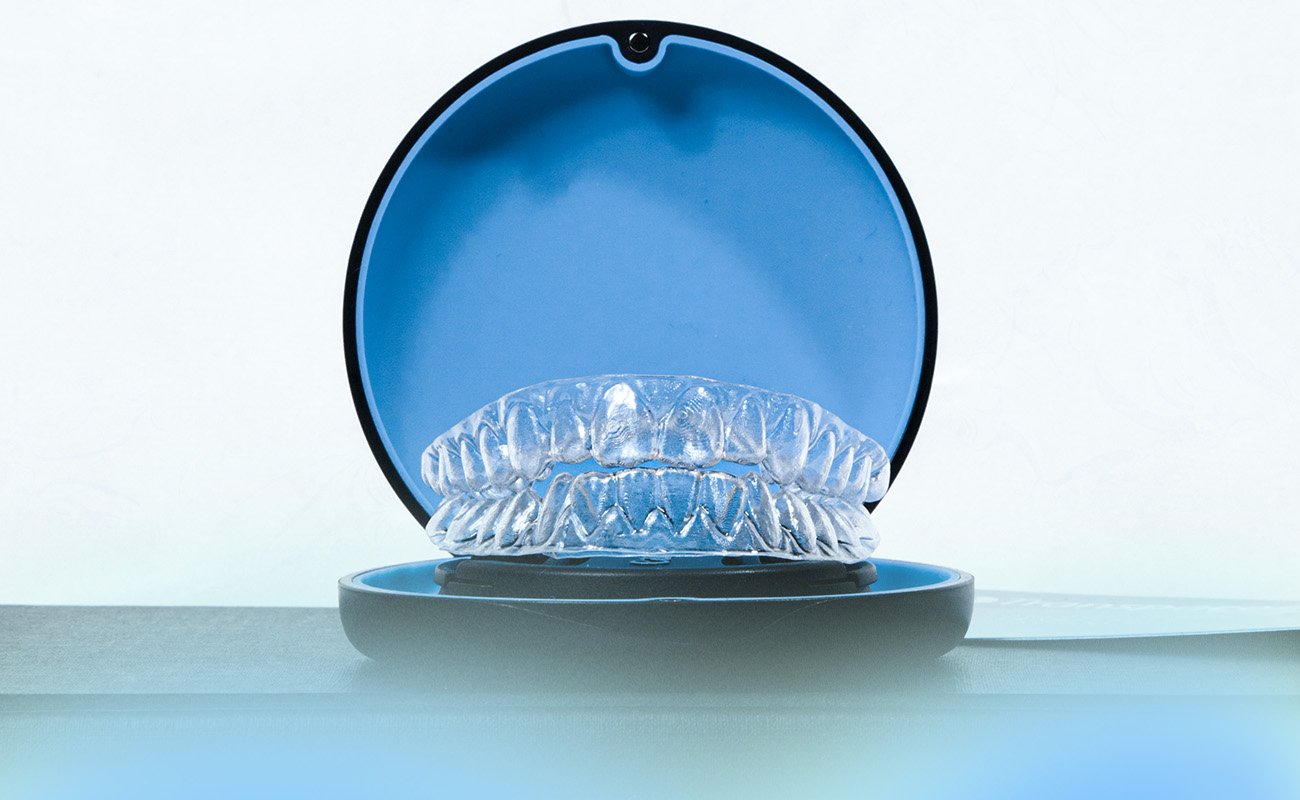As adults consider options for achieving a straighter smile, many seek alternatives to traditional braces that better align with their lifestyle and aesthetic preferences. This article explores a range of orthodontic solutions tailored to adults who wish to improve their dental alignment without the visible hardware of braces. From clear aligners and lingual braces to innovative dental techniques, we’ll delve into the benefits and considerations of each option.
Whether you’re concerned about appearance, treatment duration, or comfort, understanding these alternatives can help you make an informed decision that suits your personal and professional life. So, if you are looking for an answer to the question “What is the best alternative to braces for adults” this article is for you.
What Are Braces?
Braces are a traditional and effective orthodontic treatment designed to tackle a range of dental issues, from simple misalignments like crooked teeth to more complex conditions such as overcrowding and bite irregularities. The treatment consists of small brackets, which are carefully bonded to the front of each tooth, and thin wires that thread through these brackets. These components work together to apply consistent, gentle pressure on the teeth, gradually encouraging them to move into a more ideal position within the jaw.
The duration of treatment with braces can vary significantly depending on the complexity of the dental issues being addressed, the patient’s age, and the specific goals of the treatment. However, despite these variables, braces have a long-standing reputation for delivering substantial improvements in both the functionality and appearance of the teeth.
Pros and Cons of Braces
Braces are a time-tested method for addressing dental misalignments, offering significant benefits alongside certain challenges. One of the primary advantages of braces is their effectiveness in correcting a broad spectrum of orthodontic issues, from straightforward cases of crooked teeth to more complicated conditions like overbites or underbites. This capability can lead to enhanced oral health, as well-aligned teeth are easier to clean and less prone to decay, and a more aesthetically pleasing smile, boosting self-confidence.
However, opting for braces does come with its set of considerations. The nature of braces, with brackets and wires, necessitates meticulous oral hygiene practices to prevent food and plaque buildup, which could otherwise lead to cavities or gum disease. The treatment process can also be accompanied by discomfort, especially following tightening appointments, as the teeth and gums adjust to the new pressures. Moreover, the duration of treatment with braces can vary widely, often extending over several years for complex adjustments, requiring a commitment from the patient to the process.
See our article: Is 40 too old for braces? Does a Patient’s Age Matter?
Alternatives to Braces for Adults
For adults seeking to straighten their teeth, traditional braces aren’t the only option. In this section, we’ll explore some of these alternatives, offering insights into their benefits and how they compare to conventional braces.
Clear Braces
Clear braces, often made from ceramic or composite materials, offer an aesthetically pleasing alternative to traditional metal braces for adults concerned about the visual impact of orthodontic treatment. These braces blend in with the natural color of the teeth, thanks to their translucent brackets, which can be paired with tooth-colored wires for an even less noticeable appearance.
In terms of functionality, clear braces are comparable to metal braces in their ability to correct a wide range of dental misalignments and bite issues. They utilize the same mechanics of applying gradual pressure to teeth to move them into the desired position. However, clear braces may require more careful handling; they are often more brittle than metal braces, making them slightly more prone to chipping or cracking if not treated gently.
One potential downside of clear braces is their susceptibility to staining. Certain foods, beverages, and smoking can discolor the brackets and elastics, potentially diminishing their aesthetic advantage. As a result, individuals with clear braces might need to be more diligent about their dietary choices and oral hygiene practices.
From a cost perspective, clear braces typically command a higher price than metal braces, reflecting the advanced materials and technology used in their manufacture.
See our article: Clear Braces on The Top and Bottom Teeth – All You Need to Know.
Worth Knowing
The study published on PubMed Central reveals that a significant number of adults favor discreet orthodontic solutions like aligners or lingual braces.
Aligners
Aligners have significantly changed the approach to adult orthodontics by introducing a subtler option for straightening teeth. These clear, custom-fitted trays wrap closely around the teeth, creating a low-profile appearance that many appreciate. Aligners are designed with the user’s comfort in mind, made from a smooth plastic that avoids the brackets and wires typical of traditional braces, which can irritate some.
The removability of aligners stands out as a significant benefit, allowing users to eat and maintain their oral hygiene routine with ease, unlike the more involved care required with fixed orthodontic devices. However, this feature also demands a high level of discipline from the user, as the success of the treatment relies on wearing the aligners for the recommended 20-22 hours per day.
Although aligners are effective for a range of dental corrections, including mild to moderate misalignments and bite issues, they may not be the ideal solution for more complex orthodontic challenges that require the strength and precision control of metal braces.
See our article: Clear Aligners – Before and After.
You have the option to select between in-office and at-home aligner treatments. Below, you’ll find a list of reviews for some of the top-rated at-home aligners on the market.
Byte – The top pick, this aligner is affordable and comes with a free HyperBite and teeth whitening kit. This product also has a lifetime guarantee. See our review of Byte aligners.

Byte
An affordable option with refundable impression kits, free HyperByte, and a Byte for Life guarantee.
Check out Byte AlignersCandid – The most similar to Invisalign aligners with hybrid in-office care this product has great reviews from its customers. See our review of CandidPro aligners.

Candid
A hybrid of in-office and at-home treatment that provides 1-on-1 orthodontist support.
Check out Candid AlignersALIGNERCO – The cheapest invisible aligner on offer with a zero deposit option on a monthly payment plan. They offer 24/7 live chat support should you have any questions about your aligner or treatment. See our review of AlignerCo aligners.

AlignerCo
The cheapest at-home aligners, with monthly plans, no down payment, and considerable discounts.
Check out AlignerCo AlignersLingual Appliances
Lingual braces stand out as a discreet orthodontic option for adults, mounted on the inner surfaces of the teeth to remain hidden from view. This placement offers a significant aesthetic benefit for those who prefer not to showcase their orthodontic treatment. Despite their invisibility, lingual braces are adept at correcting a wide range of dental issues, much like traditional braces.
However, the unique placement of lingual braces introduces certain challenges. Oral hygiene can become more complex, as the braces are more difficult to clean due to their location near the tongue, necessitating extra care and attention to prevent plaque buildup and maintain gum health. Initial discomfort and irritation to the tongue are common as individuals adjust to the presence of the braces, and some may experience a temporary alteration in speech clarity.
The process of fitting lingual braces is highly specialized, involving custom-made brackets that are tailored to the individual’s dental anatomy. This level of customization, along with the expertise required for their placement, contributes to the higher cost associated with lingual braces when compared to traditional metal braces.
See our article: Incognito Braces Vs Invisalign.
Veneers
Veneers offer adults an alternative to metal braces, focusing on cosmetic improvements rather than structural teeth alignment. These thin shells, crafted from porcelain or composite resin, are tailored to cover the front surface of teeth, effectively enhancing their appearance by correcting issues like discoloration, chips, or minor gaps. The natural-looking finish of veneers can dramatically transform a smile in a relatively short period, bypassing the lengthy treatment times often associated with traditional braces.
However, it’s important to note that veneers are more suited for aesthetic enhancements and may not address underlying orthodontic conditions that affect the bite or overall dental health. The application process, which involves the removal of a small layer of tooth enamel, is irreversible, making veneers a considerable commitment.
See our article: Teeth Veneers Pros and Cons.
Worth Knowing
A study published in Open Access Maced J Med Sci. comparing dental veneers’ survival rates based on preparation designs and materials found that porcelain veneers offer superior aesthetic results and long-term reliability. Composite veneers are a good option but have slightly less durability. This information aids in selecting the most suitable veneer material and preparation design for optimal treatment outcomes.
Alternatives to Braces for Adults
In conclusion, adults looking to improve their dental appearance or address mild orthodontic issues have a range of alternatives to traditional metal braces. Options such as clear aligners, lingual braces, and veneers each serve different preferences and requirements. Aligners are almost invisible and convenient for daily use, suitable for individuals willing to adhere to the recommended wear time. Lingual braces, attached to the back of the teeth, provide an effective orthodontic solution without visible brackets and wires. Veneers offer a quick aesthetic improvement for dental imperfections but do not correct significant orthodontic problems.
When considering these alternatives, it’s essential to evaluate the long-term implications, costs, and suitability for your specific dental situation. Consulting with a dental professional can help determine the most appropriate choice to achieve a healthier, more confident smile without relying on traditional metal braces.
Frequently Asked Questions
Can I Straighten my Teeth Without Braces?
Straightening your teeth without braces is possible, however, it’s important to assess the severity of misalignment and determine the best course of action.
Clear aligners are an effective alternative to wearing braces to straighten teeth. Aligners are removable trays that sit over your teeth and are easier to maintain during treatment, are more cosmetically appealing as they are virtually invisible to anyone else, and are cheaper than most other traditional teeth straightening options.
Which Braces are Best For Adults?
Clear braces offer a more subtle appearance than traditional metal braces so are a good option for more severe teeth straightening issues in adults.
Invisible aligners are a good solution as they offer a more discreet treatment and are an effective treatment for mild to mid-severity issues with teeth.
The choice should be determined by a qualified orthodontist based on your particular requirements.
Sources:
Alajmi S., Shaban A, Al-Azemi R. Comparison of short-term oral impacts experienced by patients treated with Invisalign or conventional fixed orthodontic appliances. Medical Principles and Practice. 2019. Available online at: https://pubmed.ncbi.nlm.nih.gov/31842018/
Olsen, J., Comparison of Patient Factors Influencing the Selection of an Orthodontist, General Dentist, or Direct-To-Consumer Aligners for Orthodontic Treatment. Virginia Commonwealth University. (2019). Available online at: https://scholarscompass.vcu.edu/cgi/viewcontent.cgi?article=6855&context=etd
Ke, Y. et al. A comparison of treatment effectiveness between clear aligner and fixed appliance therapies. BMC Oral Health. 2019. doi: 10.1186/s12903-018-0695-z Available online at: https://www.ncbi.nlm.nih.gov/pmc/articles/PMC6343314/
Buschang, P.H., Shaw S.G., Ross M., Crosby D., Campbell P.M., Comparative time efficiency of aligner therapy and conventional edgewise braces. Angle Orthod (2014). DOI: 10.2319/062113-466. Available online at: https://meridian.allenpress.com/angle-orthodontist/article/84/3/391/58505/
Alothman, Y., Bamasoud, M. S., The Success of Dental Veneers According To Preparation Design and Material Type, Open Access Maced J Med Sci. 2018 Dec 20; DOI: 10.3889/oamjms.2018.353. Available online at: https://www.ncbi.nlm.nih.gov/pmc/articles/PMC6311473/
Alansari, R. A., Faydhi, D. A., Ashour, B. S., Alsaggaf, D. H., Shuman, M. T., Ghoneim, S. H., Linjawi, A. I., Marghalani, H. YA., Dause, R. R>, Adult Perceptions of Different Orthodontic Appliances, Patient Prefer Adherence. 2019; DOI: 10.2147/PPA.S234449. Available online at: https://www.ncbi.nlm.nih.gov/pmc/articles/PMC6916694/

